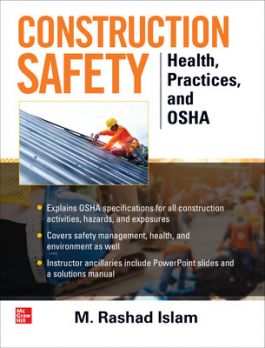The Occupational Safety and Health Administration (OSHA) is tasked with reducing the number of workplace injuries. Although they conduct regular inspections, relying solely on OSHA to keep your company safe is not enough. Instead, it requires a cultural change within your organization, including a proactive approach to safety.
Unsafe practices can put a significant dent in a company's bottom line. Look at the size of some of the fines OSHA has assessed, as reported in Industrial Safety and Hygiene News (ISHN). OSHA violations can happen at any organization, but avoiding a costly citation happens when everyone — not just the management — plays a role in managing risk.
Are you doing what's required to avoid common OSHA fines? Is your risk management program adequately protecting your workers? The best way to figure out the strength of your safety program is to look at some of the most common OSHA violations and determine if your company is at risk for any of them.
The following are the five most common OSHA violations and the steps you can take to mitigate those risks. Quickly find and correct these possible violations yourself before an OSHA inspector finds them for you.
1. Fall protection (Standard #1926.501)
Falls continue to be a common cause of serious work-related injuries and deaths, and have been the top OSHA violation for the past eleven years, with 5,424 violations in 2020. The fall protection standard focuses on guidelines to help keep workers safe when working on surfaces six feet above the ground, without protected sides. It points out where safety systems are required, which methods to use, and how to implement them.
Employers must provide a workplace that prevents workers from falling off overhead platforms, elevated workstations, or into holes in the floor and walls. Avoiding this violation ensures that all walking or working surfaces have been assessed and tested for stability before workers are allowed to begin working on them. Also, it's the employer's responsibility to ensure that adequate safety systems are in place. These systems include guardrails, safety nets, or personal fall-arrest systems.
2. Hazard Communication (Standard #1910.1200)
The Hazard Communication Standard (HCS), with 3,199 violations in 2020, contains rules covering how manufacturers must inform their workers of the hazards and identities of the chemicals they are exposed to in the workplace. The rules cover labeling and tracking chemicals, and the required employee training on chemicals. Substances falling under the HCS include:
- acids
- asbestos
- disinfectants
- glues
- lead, mercury, and other heavy metals
- paints
- pesticides
- petroleum products
- solvents
Mitigate the risk of violating hazard communication by doing the following:
- Keep an updated list of hazardous materials in your work area
- Provide material safety data sheets for each hazardous material on the list
- Label all containers with hazardous materials to identify the materials and warn employees of the potential hazard
- Train workers on the dangers of the chemicals they will be using and instruct them on the use of personal protective equipment (PPE)
- Develop a written program tying together the materials and processes
3. Scaffolding (Standard #1926.451)
Scaffolding is a temporary platform erected for employees working above the ground. According to OSHA, companies must construct scaffolding to prevent tipping, and the scaffolding must protect employees working more than ten feet above the ground from falls by using guardrails or a fall arrest system.
Most work-related injuries from scaffolding occur when there's no fall protection and the ground underneath the scaffolding is unstable. Workers face electrocution when the structure is too close to power lines, or falling tools and equipment cause injuries to workers on the ground.
Employers should hire a qualified instructor to teach their employees how to recognize hazards associated with scaffolding. Among meeting the many scaffolding requirements that result in a company being OSHA compliant, an important one is that each plank on the scaffolding must be able to support its own weight and at least four times the planned load.
4. Lockout/Tagout (Standard #1910.147)
OSHA's standard for the Control of Hazardous Energy, also known as Lockout/Tagout, outlines what workers must do to depower a dangerous machine during servicing or maintenance. One of the primary steps of lockout/tagout is locking the machine in the "off" position accompanied by a tag indicating the name of the person that has the key to the lock.
The lockout/tagout standard summarizes measures for controlling hazardous energies, including electrical, mechanical, hydraulic, pneumatic, chemical, thermal, etc. Machinery can release hazardous energy even when the machine is not being used. Because of this, dangerous machinery must be completely shut off before starting any servicing or maintenance.
There were 2,065 lockout/tagout violations in 2020, all of which could have been prevented with the following:
- Developing and implementing an energy control program
- Using lockout devices for equipment that can be locked out
- Developing, documenting, implementing, and enforcing energy control procedures
- Using only lockout/tagout devices authorized for use with the particular piece of equipment or machinery
- Establishing a policy that permits only the employee who applied a lockout/tagout device to remove it
- Ensuring that new or overhauled equipment is capable of being locked out
- Providing effective training as mandated for all employees covered by the standard.
5. Respiratory protection (Standard #1910.134)
Respirators come in the form of a facepiece, hood, or helmet protecting a worker from potentially harmful airborne agents or contaminated air. These chemicals in the air can result in several respiratory issues, including cancer and lung impairment. It's up to employers to ensure that respirators are available and adequately fit the employee's face.
Every organization should host a formal respirator program, teaching workers how to use the respirators correctly since they will only effectively protect workers when used as the manufacturer intended. Employers must be aware that they should only provide respirators that meet OSHA safety standards, and they must train all workers on the correct way to wear them.
Risk management starts with you
OSHA violations can happen, and accidents in manufacturing are nearly inevitable, even in a smart factory. Organizations must foster and cultivate a safety culture, giving everyone a role to play to encourage them to focus on safety.
Work culture revolves around values and beliefs that can unite an entire organization, and a safety culture should do the same. A risk management plan should support your company's goals, and being proactive about minimizing workplace incidents will allow you to bridge the safety gap.









